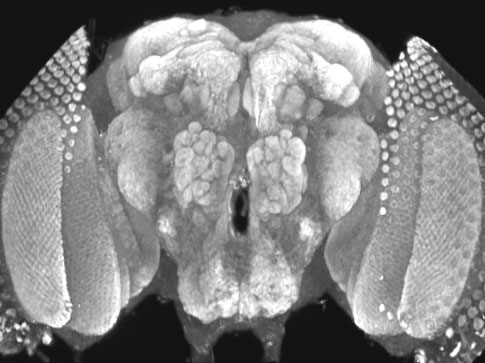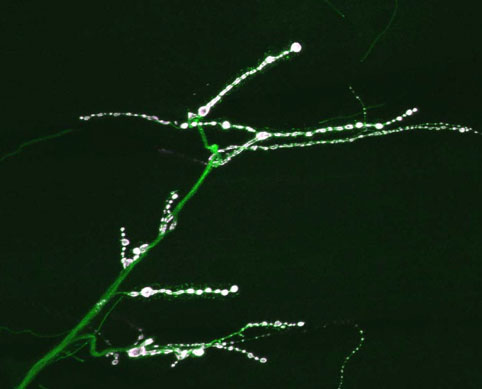|

| |
 Jim Mediatore, 2004- Jim Mediatore, 2004-
B.S. in Biochemistry at the Univ. of Colorado, 2003
In spite of many advances in
Huntington’s disease (HD) research since the cloning of the huntingtin (Htt)
gene over ten years ago, specific mechanisms of pathogenesis remain unclear.
Studies have implicated several biochemical and cellular pathways that may lead
from polyglutamine expansion in the Htt protein to pathogenesis, however the
role of the wild-type huntingtin gene in the brain remains undetermined. There
are several advantages to using Drosophila melanogaster to study the
function of Htt: the fly genome contains a Htt homolog, the fly is amenable to
genetic and molecular approaches that are not available in vertebrate systems,
and enhancer and suppressor screens are available to study loss of function
mutants. Jim conduct studies on the
structure and function of the dHtt gene.
|




